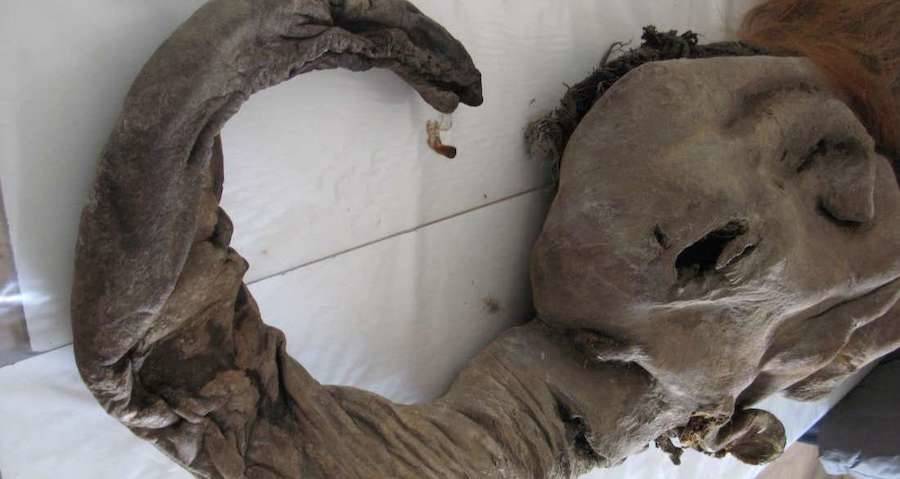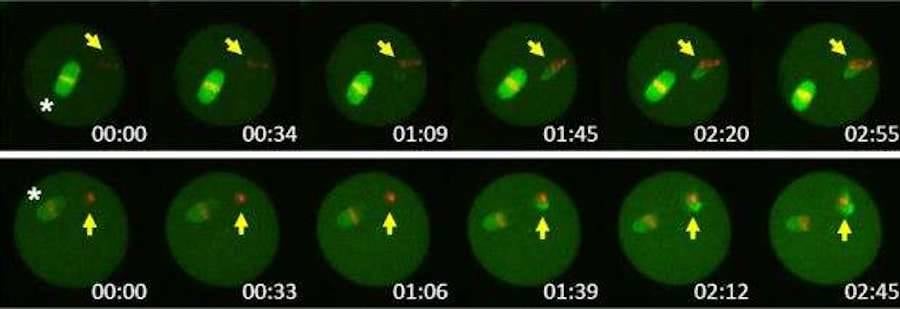Šokantno: Mamut star 28 000 godina daje znakove života
Page 1 of 1
 Šokantno: Mamut star 28 000 godina daje znakove života
Šokantno: Mamut star 28 000 godina daje znakove života
Ponovo živ!
28,000-Year-Old Woolly Mammoth Cells Show Biological Signs Of Life
The 28,000-year-old woolly mammoth was dug out of Siberian permafrost in 2011. Now scientists have found that its DNA is partially intact.

Eight years ago, an impressively well-preserved woolly mammoth was dug out of the Siberian permafrost. With the species having met its extinction some 4,000 years ago, finding such a relatively pristine specimen was an astounding feat — particularly since this one was 28,000 years old.
Scientists have since been eagerly studying the uncovered mammoth in an attempt to learn how viable its biological materials still are, all these millennia later. In a new study published in Scientific Reports, it’s clear that substantial progress has been made in that attempt.
According to Fox News, cells from the 28,000-year-old specimen have shown “signs of biological activities” after being infused into mouse oocytes — cells found in ovaries that are capable of forming an egg cell after genetic division.
“This suggests that, despite the years that have passed, cell activity can still happen and parts of it can be recreated,” said study author Kei Miyamoto from the Department of Genetic Engineering at Kindai University. “Until now many studies have focused on analyzing fossil DNA and not whether they still function.”
The process to establish whether the mammoth DNA could still function wasn’t easy. According to IFL Science, researchers began by taking bone marrow and muscle tissue samples from the animal’s leg. These were then analyzed for the presence of undamaged nucleus-like structures, which, once found, were extracted.
Once these nuclei cells were combined with mouse oocytes, mouse proteins were added, revealing some of the mammoth cells to be perfectly capable of nuclear reconstitution. This, finally, suggested that even 28,000-year-old mammoth remains could harbor active nuclei.
Five of the cells even showed highly unexpected and very promising results, namely signs of activity that usually only occur immediately preceding cell division. The study maintains, however, that there’s much work left to be done.
“In the reconstructed oocytes, the mammoth nuclei showed the spindle assembly, histone incorporation and partial nuclear formation; however, the full activation of nuclei for cleavage was not confirmed,” the study said.
The below image represents a time-lapse of oocytes injected with mammoth nuclei.

“We want to move our study forward to the stage of cell division, but we still have a long way to go,” said Miyamoto.
While most mammoths died out between 14,000 and 10,000 years ago, this particular mammoth — which the research team has dubbed “Yuka” — belonged to a resilient population of the species that managed to live in the Arctic Ocean’s Wrangel Island until 4,000 years ago.
The discovery that Yuka’s ancient cells have shown signs of structural DNA integrity, while not confirming the ability to bring the species out of extinction, does complement longstanding research efforts in the scientific community to do just that.
https://allthatsinteresting.com/reanimated-woolly-mammoth-cells?utm_campaign=twitterpdtr1&utm_source=twitter&utm_medium=social
---
ma da

crvenkasti-

Posts : 29707
2014-04-17
 Re: Šokantno: Mamut star 28 000 godina daje znakove života
Re: Šokantno: Mamut star 28 000 godina daje znakove života
sigurno ga je neki srbin hranio i uzgajao kao kućnog ljubimca
_________________


Šandor Winnetou-

Posts : 19783
2017-12-31
 Re: Šokantno: Mamut star 28 000 godina daje znakove života
Re: Šokantno: Mamut star 28 000 godina daje znakove života
tre wrote:sigurno ga je neki srbin hranio i uzgajao kao kućnog ljubimca
srbomamut

crvenkasti-

Posts : 29707
2014-04-17
 Re: Šokantno: Mamut star 28 000 godina daje znakove života
Re: Šokantno: Mamut star 28 000 godina daje znakove života
Nije da je živ, nego da je stanična struktura dovoljno očuvana kako bi se mogao klonirati
Predviđanja su da bi se to moglo dogoditi do 2040te... možda i ranije.
Predviđanja su da bi se to moglo dogoditi do 2040te... možda i ranije.

Hektorović- Posts : 26373
2018-04-10
 Re: Šokantno: Mamut star 28 000 godina daje znakove života
Re: Šokantno: Mamut star 28 000 godina daje znakove života
Ne znam koji će im kurac klonirani mamut. Samo da muče jadnu životinju bez veze.Hektorović wrote:Nije da je živ, nego da je stanična struktura dovoljno očuvana kako bi se mogao klonirati
Predviđanja su da bi se to moglo dogoditi do 2040te... možda i ranije.
Njihov svijet je davna prošlost.

Ringo10- Posts : 21667
2015-09-24
 Re: Šokantno: Mamut star 28 000 godina daje znakove života
Re: Šokantno: Mamut star 28 000 godina daje znakove života
Mogli bi uskoro tako klonirati i neandertalce i držati ih kao roblje.
ja bih odmh kupio dva
ja bih odmh kupio dva

epikur37- Posts : 45339
2015-08-06
 Re: Šokantno: Mamut star 28 000 godina daje znakove života
Re: Šokantno: Mamut star 28 000 godina daje znakove života
epikur37 wrote:Mogli bi uskoro tako klonirati i neandertalce i držati ih kao roblje.
ja bih odmh kupio dva
Nedavno sam čuo da mi svi imamo 2-3% dnk od neandertalaca.
Od njih smo naslijedili bijelu kožu i sklonost debljanju.
Homosapiensi su u Europu došli iz Afrike, znači bili su crnci. Neandertalci su već 300 000 godina živjeli ne sjeveru. Prilagodili su se ledenom dobu i zato su taložili mast.

crvenkasti-

Posts : 29707
2014-04-17
 Re: Šokantno: Mamut star 28 000 godina daje znakove života
Re: Šokantno: Mamut star 28 000 godina daje znakove života
crvenkasti wrote:
Nedavno sam čuo da mi svi imamo 2-3% dnk od neandertalaca.
Od 1% do 4%.

Guest- Guest
 Re: Šokantno: Mamut star 28 000 godina daje znakove života
Re: Šokantno: Mamut star 28 000 godina daje znakove života
Joža manolić se u tim godinama tek oženio...

T.- Posts : 17557
2014-04-14
Age : 83
 Similar topics
Similar topics» U kakvom je helikopteru letio predsjednik Irana: Star je više od 40 godina
» Upropastio vam je 10 godina života i ne samo to...
» Ćukow star 18000 godina...
» Brnabić o Šešelju:Tko će njemu vratiti 13 godina života,kako s eto nadoknađuje?
» Otkriven 2700 godina star otisak pečata upravitelja Jeruzalema
» Upropastio vam je 10 godina života i ne samo to...
» Ćukow star 18000 godina...
» Brnabić o Šešelju:Tko će njemu vratiti 13 godina života,kako s eto nadoknađuje?
» Otkriven 2700 godina star otisak pečata upravitelja Jeruzalema
Page 1 of 1
Permissions in this forum:
You cannot reply to topics in this forum
 Events
Events Latest images
Latest images
 by crvenkasti 10/6/2020, 14:59
by crvenkasti 10/6/2020, 14:59